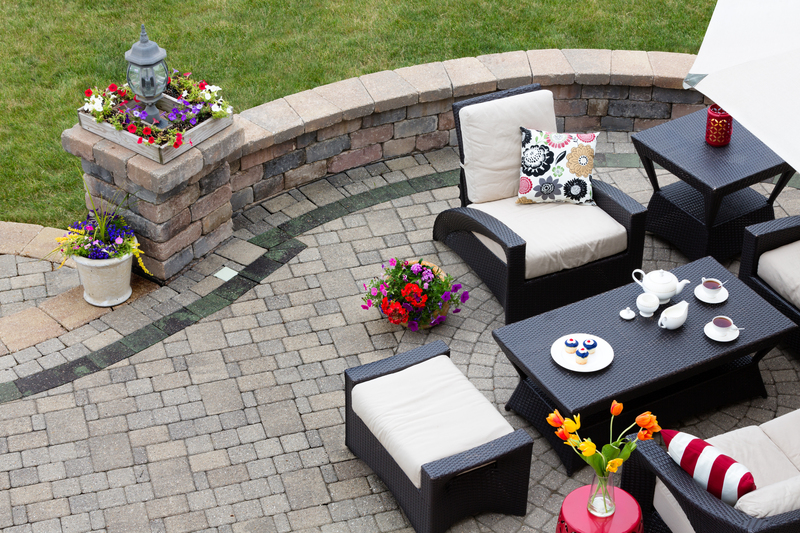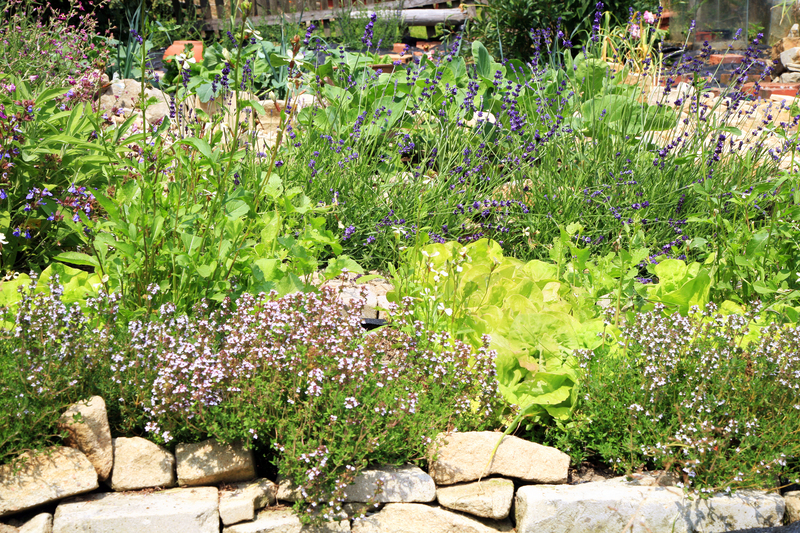Transformative Steps to Restore Garden Glory
Posted on 04/09/2025
Transformative Steps to Restore Garden Glory
Is your once-lush garden looking tired, overgrown, or neglected? You're not alone. Many homeowners and garden enthusiasts find their outdoor oasis losing its charm over time. But don't despair -- restoring your garden to its former glory, or making it even better, is completely possible! In this comprehensive guide, we'll walk through transformative steps to restore garden glory, offering practical advice and inspiration to reinvigorate your green spaces.

Why Gardens Lose Their Glory
Before diving into the solutions, it's crucial to understand why gardens fall into decline. Garden restoration often starts with identifying the underlying issues so that you can address them effectively:
- Neglect: Lack of regular maintenance allows weeds to take over, and plants to become overgrown.
- Poor Soil Health: Over time, soil can become compacted, low in nutrients, or unbalanced in pH, affecting plant vitality.
- Drainage Issues: Poor water movement can drown certain plants or create patchy growth.
- Pests and Disease: If not monitored, infestations and plant diseases can decimate cherished blooms and greenery.
- Outdated Design: Styles change, and gardens can lose their visual appeal if not occasionally updated.
Step 1: Assess the Current State of Your Garden
The first transformative step in restoring garden glory is to conduct a thorough garden assessment. Take a notebook and walk through your outdoor space. Pay special attention to:
- Plant Health: Which plants are thriving? Which look sickly or are dead?
- Soil Condition: Is the soil compacted or crumbly? Are there bare patches?
- Garden Structure: Check fences, trellises, garden paths, and edging for damage or disrepair.
- Light and Shade: Are some areas getting too much or too little sunlight for their plantings?
- Pests and Weeds: Note any infestations or aggressive weed growth.
Tips for a Detailed Garden Audit
- Photograph your garden from several angles for before-and-after comparison.
- Make a list of urgent issues to tackle first (dead trees, broken fencing, etc.).
- Identify existing features worth saving or highlighting in your future design.
Step 2: Clear, Clean, and Prepare
Every garden restoration project starts by clearing away the old to make room for the new. This phase can be the most physically demanding but is also deeply rewarding, as you see the potential of your space begin to return.
Clearing Out the Old
- Remove dead or dying plants: Pull out any that are beyond recovery. This will instantly improve your garden's appearance.
- Prune overgrown shrubs and trees: Careful pruning allows sunlight and air circulation, encouraging fresh growth.
- Weed relentlessly: Remove weeds, roots and all, to prevent regrowth. Consider using natural mulch to suppress weeds after clearing.
- Dispose of debris: Bag up garden waste or arrange for a green waste pickup.
Soil and Hardscape Prep
- Turn and amend the soil: Aerate compacted beds and mix in organic matter like compost to boost soil health.
- Repair hardscape: Fix uneven paths, reset loose stones, and mend fences or trellises as needed.
- Edge the beds: Define flower beds with crisp edges--this instantly elevates a garden's tidy look.
Step 3: Rejuvenate the Soil for Lush Growth
Healthy, thriving plants require rich, balanced soil. Restoring your garden's glory hinges on revitalizing your soil:
- Conduct a soil test: Kits are affordable and will help you understand pH and nutrient imbalances.
- Add amendments: Based on the test, mix in compost, manure, peat moss, lime, or other organic materials as needed.
- Mulch generously: Mulching conserves moisture, suppresses weeds, and enriches the soil as it decomposes.
- Rotate and rest beds: If possible, give heavily-used beds a rest or plant cover crops to enhance nutrient cycling.
Pro Tip:
- Worms and other soil organisms are your friends! Encourage them by avoiding heavy chemicals.
Step 4: Plan Your Garden Makeover
With a clean slate, it's time to envision your ideal garden. Transformative garden restoration comes down to thoughtful planning. Take inspiration from garden magazines, online platforms, or local botanical gardens.
Key Factors in a Restorative Garden Design
- Favorite Plants: Create a wishlist of plants you love, but be sure they're well-suited to your region and soil.
- Sun and Shade: Place shade-loving plants under trees and sun-lovers where they'll thrive.
- Year-Round Interest: Mix evergreens, perennials, and bulbs to ensure beauty in every season.
- Pollinator Support: Select nectar-rich flowers and maintain diverse plantings to attract bees and butterflies.
- Functional Spaces: Incorporate seating areas, play zones, or vegetable plots as needed.
Drawing a sketch of your new layout can help you visualize the transformation and catch any potential issues before planting begins. Don't be afraid to experiment with shapes, colors, and plant combinations!
Step 5: Plant with Purpose and Care
The heart of garden restoration is the thoughtful reintroduction of plant life. Here's how to plant for maximum impact:
- Select healthy specimens: Buy from reputable nurseries and avoid plants with signs of disease or rootbound pots.
- Follow a planting plan: Arrange plants while still in their pots to ensure pleasing composition and adequate spacing before committing to holes.
- Plant at the right depth: Root balls should sit even with or just below the soil line, and be sure to water thoroughly at planting.
- Prioritize diversity: Include a mix of textures, heights, and bloom times for a visually stunning effect that also resists pests and disease.
- Consider native plants: Native species are better adapted to your conditions and typically require less upkeep for spectacular results.
Adding Trees and Shrubs for Structure
Trees and shrubs form the backbone of any garden restoration. For long-term beauty:
- Choose disease-resistant varieties whenever possible.
- Pay close attention to mature size to avoid overcrowding.
- Plant trees away from structures, utilities, and septic fields.
- Use shrubs for hedging, winter interest, and wildlife habitat.
Step 6: Enhance with Hardscape and Features
Restoring your garden's glory isn't just about plants; hardscape and decorative elements bring character and functionality to any green space.
- Paths and Patios: Define walkways with gravel, stone, or pavers, and create small gathering spots with simple patios or benches.
- Water Features: Fountains, ponds, or even a birdbath can add tranquility and attract wildlife.
- Lighting: Solar or LED lamps illuminate focal points, making the garden magical after sunset.
- Garden Art: Ornaments, sculptures, and colorful pots are personal touches that set your restored garden apart.
- Edging and Borders: Crisp edging keeps mulch and soil in place and gives a well-tended appearance.
Step 7: Institute Sustainable Maintenance for Long-Term Garden Glory
A truly spectacular garden remains glorious season after season thanks to regular, sustainable care. Set yourself up for ongoing success:
- Water wisely: Water deeply but infrequently to encourage deep roots. Use soaker hoses or drip irrigation to minimize waste.
- Mulch as needed: Refresh mulch yearly to reduce weeds and retain moisture.
- Fertilize judiciously: Organic fertilizers or slow-release blends keep plants vigorous without overwhelming the ecosystem.
- Monitor for pests: Inspect regularly and use organic or integrated pest management (IPM) techniques.
- Weed routinely: Weeding every few weeks is far easier -- and more effective -- than waiting for weeds to take control.
- Prune with purpose: Regular deadheading, trimming, and shaping keeps your garden looking its best.
Time-Saving Garden Maintenance Tips
- Choose drought-tolerant or low-maintenance plants for problem areas.
- Invest in quality tools that make work easier and last longer.
- Start a simple garden journal to track plant performance and maintenance tasks.
Unleashing Your Garden's Full Potential
With these transformative steps to restore garden glory, you can turn back the clock on a neglected yard, or infuse new vitality into a long-standing landscape. Restoration is about more than plants -- it's about fostering a place of beauty, relaxation, and inspiration right outside your door.
- Start with small, manageable projects and watch your confidence bloom along with your flowers.
- Involve family and friends for a sense of accomplishment and shared enjoyment.
- Celebrate your progress with seasonal gatherings or a quiet stroll through your rejuvenated space.
Restoring your garden's glory is a journey, but with each step, you'll rediscover the joy that comes from nurturing the land and watching beauty flourish anew. Whether you're aiming for a garden makeover, reviving neglected corners, or simply maintaining what you love, these actionable steps will ensure your garden becomes a thriving haven for years to come.

Frequently Asked Questions
What is the fastest way to rejuvenate a garden?
Quick wins include pruning overgrown plants, removing weeds, adding fresh mulch, and introducing colorful potted flowers while you work on longer-term projects.
How often should I test my garden soil?
For optimum results, test your soil every 2-3 years, or anytime you notice unusual plant symptoms or are creating new beds.
Which plants are best for easy garden restoration?
Native perennials, ornamental grasses, and evergreen shrubs are excellent choices. They offer resilience, minimal care, and year-round beauty.
What are some low-maintenance strategies for long-lasting garden glory?
Mulching, drought-tolerant plants, smart irrigation, and integrated pest management will make your garden easier to care for and keep it looking lush all year.
Conclusion: Bring Back the Glory to Your Garden
Taking the transformative steps to restore garden glory is as rewarding as the end result. Assess, clear, enrich, replant, reinvent, and maintain -- each phase builds on the last for a garden that's not only beautiful, but resilient and full of life. Start your garden transformation today, and let every season unveil a new chapter in your landscape's story.
Happy gardening! May your restored garden bring you joy, tranquility, and endless inspiration.

